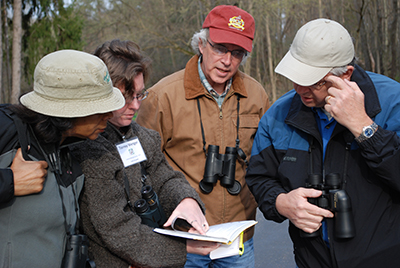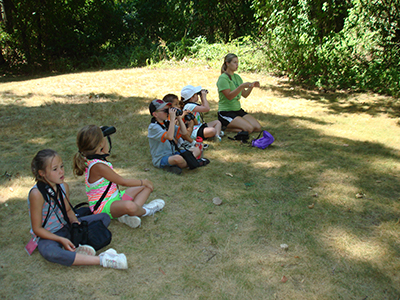Birdwatching is a great way to spring into science
Spring into science by birdwatching in your own backyard or places that offer avian educational opportunities of our fine-feathered friends.

Spring is in the air and a perfect time for some avian, or bird, science. Youth can be introduced to the avian world by birdwatching in their backyard or places that offer avian educational opportunities of our fine-feathered friends.
Have you seen your first robin or bluebird yet? If not, take a walk and you will likely hear the “cheer up cheerily” of the American robin. Have fun outdoors and be introduced and learn about birds in spring by birdwatching. All of your senses come to life when birdwatching. The sense of smell as you enjoys the fresh air; the sense of sight enjoying the beautiful colors of spring; the sense of touch of the dirt beneath your feet; and the sense of hearing as the birds sing to establish territory and find a mate.
The spring migrant birds will be returning, such as the American robins, song sparrows, sandhill cranes, red-winged blackbirds and even the turkey vultures. The resident birds, or birds that stay through the winter, such as American crows, house sparrows, barred owls and northern cardinals, are already making nests.
 In preparation for a birdwatching adventure, simple tools can be used. For watching birds, Michigan State University Extension recommends having a pair of binoculars, a bird identification book, a journal and a sense of adventure. Take a seat in your own yard or take a walk in the neighborhood. A camera is another great tool to take along; many people photograph birds so they can use the images later for identification. You may want to research and collect other resources before or after your walk. Some suggestions include eBird, a citizen science site for reporting bird sightings; Cornell Lab of Ornithology All About Birds, a website to help identify birds by sight and sound; or Grassland Birds and Pastures, the MSU 4-H website. You could also join your local Audubon club or even start a 4-H SPIN club for birdwatching!
In preparation for a birdwatching adventure, simple tools can be used. For watching birds, Michigan State University Extension recommends having a pair of binoculars, a bird identification book, a journal and a sense of adventure. Take a seat in your own yard or take a walk in the neighborhood. A camera is another great tool to take along; many people photograph birds so they can use the images later for identification. You may want to research and collect other resources before or after your walk. Some suggestions include eBird, a citizen science site for reporting bird sightings; Cornell Lab of Ornithology All About Birds, a website to help identify birds by sight and sound; or Grassland Birds and Pastures, the MSU 4-H website. You could also join your local Audubon club or even start a 4-H SPIN club for birdwatching!
If you want to venture out of your own neighborhood for a great birdwatching experience, take a day trip to a nature center or local park. For a great educational experience, try out the Kellogg Bird Sanctuary at the W.K. Kellogg Biological Station (KBS), MSU’s largest off-campus education complex and one of North America's premier inland field stations. The mission of KBS is focused on ecological and environmental research, education and community outreach.
 Spring into one of the Kellogg Bird Sanctuary’s free admission days:
Spring into one of the Kellogg Bird Sanctuary’s free admission days:
- Sunday, April 19 - Sustaining the Vision Open House
- Tuesday, April 22 - Earth Day
Go to the KBS Bird Sanctuary Events and Programs page to see other upcoming events or opportunities at the Kellogg Bird Sanctuary. Or, just plan a visit to the Kellogg Bird Sanctuary. You can also check out their Facebook page.
Spring into action and enjoy your birdwatching educational adventure with friends, family or club members. Who knows, maybe an interest will be sparked for a future career in the study of birds!
For more information about 4-H learning opportunities and other 4-H programs, contact your county MSU Extension office.



 Print
Print Email
Email


